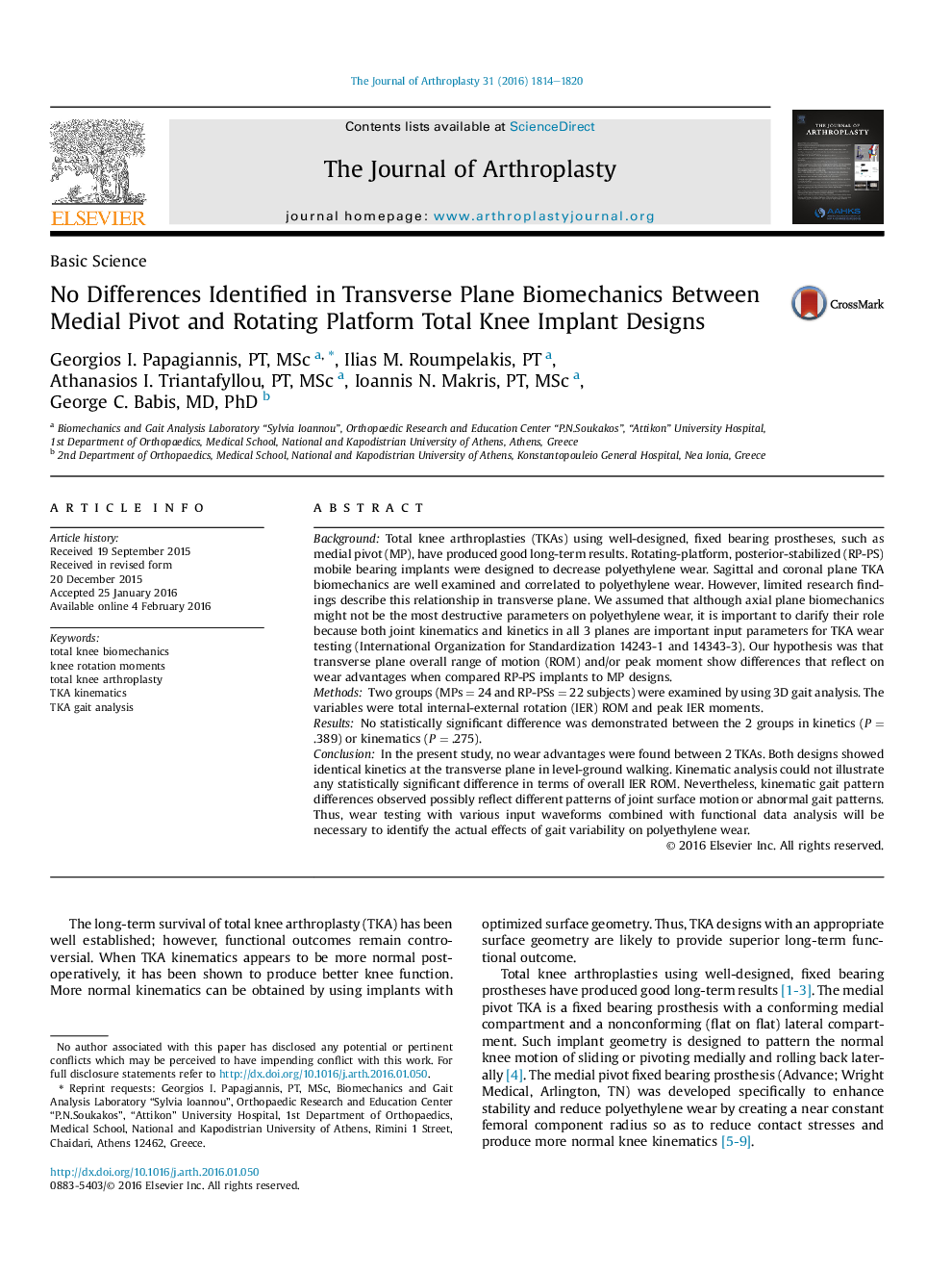| کد مقاله | کد نشریه | سال انتشار | مقاله انگلیسی | نسخه تمام متن |
|---|---|---|---|---|
| 6208650 | 1603974 | 2016 | 7 صفحه PDF | دانلود رایگان |
BackgroundTotal knee arthroplasties (TKAs) using well-designed, fixed bearing prostheses, such as medial pivot (MP), have produced good long-term results. Rotating-platform, posterior-stabilized (RP-PS) mobile bearing implants were designed to decrease polyethylene wear. Sagittal and coronal plane TKA biomechanics are well examined and correlated to polyethylene wear. However, limited research findings describe this relationship in transverse plane. We assumed that although axial plane biomechanics might not be the most destructive parameters on polyethylene wear, it is important to clarify their role because both joint kinematics and kinetics in all 3 planes are important input parameters for TKA wear testing (International Organization for Standardization 14243-1 and 14343-3). Our hypothesis was that transverse plane overall range of motion (ROM) and/or peak moment show differences that reflect on wear advantages when compared RP-PS implants to MP designs.MethodsTwo groups (MPs = 24 and RP-PSs = 22 subjects) were examined by using 3D gait analysis. The variables were total internal-external rotation (IER) ROM and peak IER moments.ResultsNo statistically significant difference was demonstrated between the 2 groups in kinetics (P = .389) or kinematics (P = .275).ConclusionIn the present study, no wear advantages were found between 2 TKAs. Both designs showed identical kinetics at the transverse plane in level-ground walking. Kinematic analysis could not illustrate any statistically significant difference in terms of overall IER ROM. Nevertheless, kinematic gait pattern differences observed possibly reflect different patterns of joint surface motion or abnormal gait patterns. Thus, wear testing with various input waveforms combined with functional data analysis will be necessary to identify the actual effects of gait variability on polyethylene wear.
Journal: The Journal of Arthroplasty - Volume 31, Issue 8, August 2016, Pages 1814-1820
